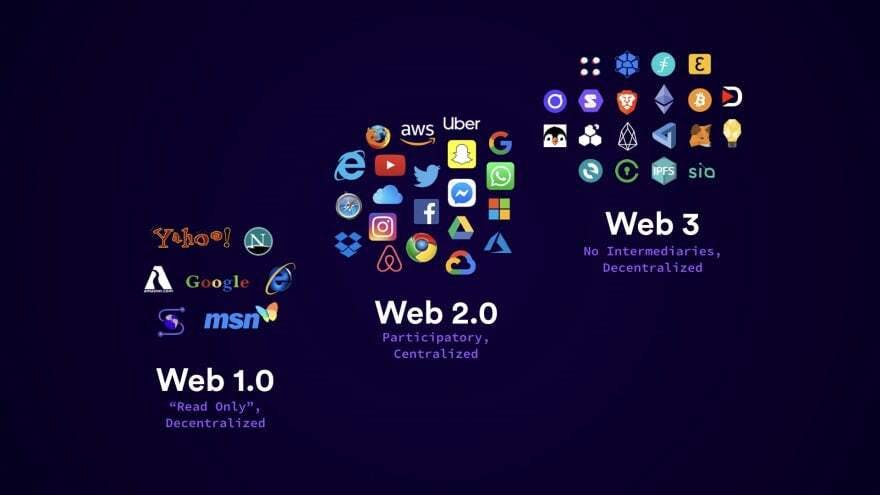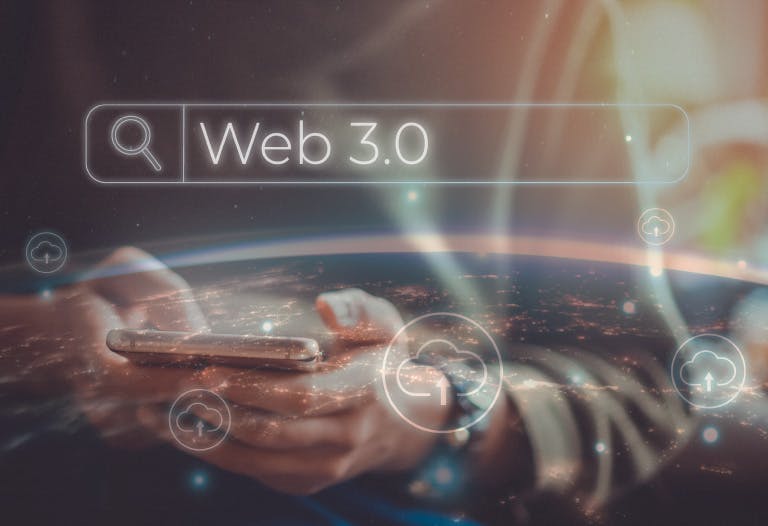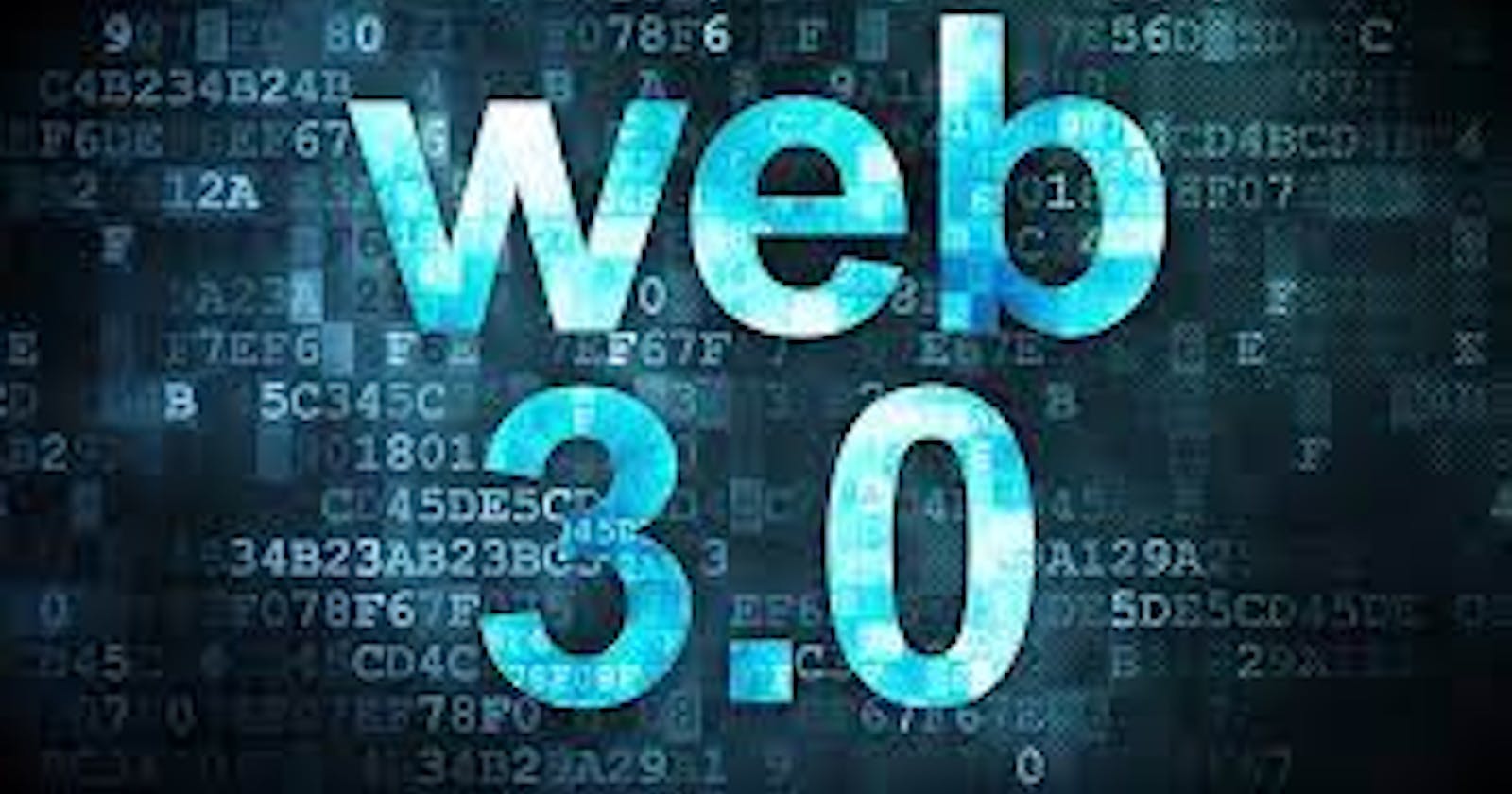The Internet's Evolution
The World Wide Web (WWWW) is the primary instrument used by billions of people to share, read, and write information as well as connect with one another through the internet. The internet has evolved considerably over time, and its modern uses are almost unrecognizable from its early days. Web 1.0, Web 2.0, and Web 3.0 are three stages in the growth of the internet.

What is Web 1.0?
Web 1.0 was the very first version of the internet. Consider the read-only or syntactic web to be Web 1.0. The majority of the participants were content consumers, whereas the creators were mostly web developers who produced websites with mostly text or graphic-based content. Between 1991 and 2004, there was a period known as Web 1.0. In Web 1.0, sites offered static content rather than dynamic hypertext markup language (HTML). There was limited interactivity on the web sites, and data and content came from a static file system rather than a database.
What is Web 2.0?
The majority of us have only seen the web in its present form, often known as Web 2.0, or the interactive read-write and social web. In the Web 2.0 ecosystem, you don't have to be a developer to participate in the development process. Many applications are built in such a way that anybody can make them.
You have the ability to think and share your ideas with the rest of the world. In Web 2.0, you may also submit a video for millions of other people to view, interact with, and comment on. Web 2.0 apps include Youtube, Facebook, Flickr, Instagram, Twitter, and other social media platforms. Companies may employ web technologies like HTML5, CSS3, and Javascript frameworks like ReactJs, AngularJs, VueJs, and others to build new concepts that allow users to contribute more to the Social Web. As a result, because Web 2.0 is designed around people, developers just need to provide a method to empower and engage them. For many Web 2.0 businesses, such as Google, Facebook, Twitter, and others, more data equals more targeted marketing. This leads to more clicks and, as a result, more advertising revenue. The exploitation and centralization of user data are necessary for the web to work as we know and use it today. As a result, data breaches in Web 2.0 apps are rather prevalent. There are even websites dedicated to tracking data breaches and telling you when your personal data has been compromised.
In Web 2.0, you have no control over your data or how it is stored. In reality, companies regularly track and keep user data without their knowledge or consent. All of this data is then owned and managed by the companies in charge of these platforms. Furthermore, governments routinely shut down servers or confiscate bank accounts when they suspect someone is expressing an opinion that opposes their propaganda. Using centralized servers, governments may easily intervene, control, or shut down programs. Because banks are also digital and under centralized management, governments regularly interfere. They can, however, suspend bank accounts and restrict access to funds during periods of extreme volatility, excessive inflation, or other political upheaval. Web 3.0, which aims to drastically reimagine how we build and interact with apps from the bottom up, will fix many of these issues.

DEFINITIONS OF WEB 3.0
Web 3.0 refers to the next generation of the internet, in which websites and applications will be able to handle data in a clever human-like manner using technologies such as machine learning (ML), Big Data, and decentralized ledger technology (DLT), among others. Tim Berners-Lee, the creator of the World Wide Web, dubbed Web 3.0 the Semantic Web, with the goal of creating a more autonomous, intelligent, and open internet. The Semantic Web, according to Tim Berners-Lee, is designed to "automatically" interact with systems, people, and home gadgets. As a result, both people and robots will be involved in content development and decision-making. This would allow for the intelligent generation and dissemination of highly personalized content to every internet user.
Key Features of Web 3.0
1. Semantic Web
The "semantic web" is an important part of Web 3.0. Tim Berners-Lee created the term to describe a network of data that robots can parse. So, what does that imply in simple English? What does the term "semantics" mean exactly? What's the difference between saying "I adore Bitcoin" and saying "I adore Bitcoin"? The meanings of the two sentences are comparable, despite the differences in syntax. In the above example, semantics is concerned with the meaning or emotion represented by facts, and both of those statements indicate the same feelings. The semantic web and artificial intelligence are the two foundations of Web 3.0. The semantic web will help educate the computer what the data means, allowing AI to create real-world applications.
The main idea is to create a knowledge spiderweb throughout the internet that will help people comprehend what words mean and generate, share, and link material through search and analysis. Because of semantic information, Web 3.0 will allow for increased data exchange. As a result, the user experience advances to a new level of connection that utilizes all available data.
2. Artificial Intelligence
Artificial intelligence will enable websites to filter and present the most relevant information to consumers. Organizations have begun to collect client feedback in the present Web 2.0 age to better determine the quality of a product or asset. Consider a website like Rotten Tomatoes, which allows people to score and review movies. Films having a better rating are frequently referred to as "good films." These kind of lists enable us to pass past the "bad data" and get right to the "good data." Peer evaluations, as we've already established, are one of Web 2.0's most important contributions. Human suggestions, on the other hand, are not incorruptible, as we all know. To boost their ratings, a group of people may band together to offer a film undeservedly favorable evaluations. Artificial intelligence can learn to differentiate between good and poor data and give us with trustworthy data.
3. Ubiquitous
Being or having the ability to be everywhere, especially at the same time, is referred to as ubiquity. To put it another way, ubiquitous. In this sense, Web 2.0 is already ubiquitous since, for example, a Facebook user may instantaneously snap and post an image, which then becomes ubiquitous because it is accessible to anybody, regardless of location, as long as they have access to the social media platform.
4. 3D graphics
As the internet grows from a simple two-dimensional web to a more realistic three-dimensional cyberworld, Web 3.0 will have a significant impact on its future. Three-dimensional design is used extensively on Web 3.0 websites and services, such as e-commerce, online gaming, and the real estate market.
As bizarre as it may appear, thousands of individuals from all over the world are presently engaging at this location. Consider online games like Second Life or World of Warcraft, where players are far more concerned about the safety of their virtual avatars than they are about their real-life counterparts.
Conclusion
The new internet will offer a more personalized and tailored surfing experience, as well as a smarter and more human-like search helper and other decentralized benefits, all of which are supposed to contribute to a more egalitarian web. This will be accomplished by allowing each individual user to take control of their data and enhancing the overall experience through a variety of innovations that will be implemented once it is in place.
The internet will become considerably more intertwined in our daily lives when Web 3.0 arrives, which is difficult to imagine given how smart gadgets have already impacted our behavioral patterns. READ MORE
